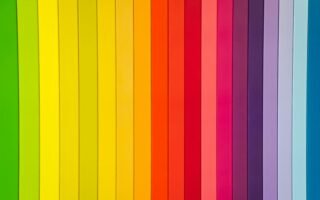The film and animation industry has undergone a major transformation thanks to 3D design technology. From stunning visual effects to lifelike animated characters, 3D design has changed the way we create and experience films. As technology advances, 3D design has become an integral part of modern film and animation production, offering limitless creative possibilities. In this article, we explore how 3D design is impacting the film and animation industry and the important role it plays in creating extraordinary cinematic experiences.
What is 3D Design?
3D design refers to the use of computer software to create three-dimensional objects. In contrast to two-dimensional (2D) design, 3D design allows objects and characters to have length, width and depth, creating a more realistic visual effect. This technology is used in various fields, including architecture, animation, video games, and of course films.
The Role of 3D Design in Modern Film and Animation
1. Creation of Stunning Visual Effects
One of the greatest contributions of 3D design in film is its ability to create stunning visual effects. Now you can create visual effects (VFX) such as explosions, meteor showers and epic action scenes with high precision. Films like Avatar, The Avengers, and Interstellar use 3D design to create worlds that are not only imaginative, but also incredibly realistic. By using 3D effects, directors and production teams can transform fantasy worlds into reality and provide audiences with extraordinary visual experiences.
2. Lively and Realistic Animated Characters
3D design allows you to create animated characters that are more lifelike and realistic than traditional animation. Technologies such as motion capture and digital sculpting allow animated film characters to imitate human movements and facial expressions down to the smallest detail. Movies like Toy Story, Frozen, and Shrek are perfect examples of how 3D design can be used to create animated characters and give them a more realistic and distinctive feel.
3. Stunning depiction of a fantasy world
Science fiction and fantasy films use 3D design to create worlds and environments that would be impossible in traditional films. Other worlds, futuristic cities and imaginary landscapes can be depicted in detail, giving viewers the opportunity to explore places that only exist in their imagination. Films like Star Wars, Lord of the Rings, and Jurassic Park are great examples of how 3D design can create amazing and unforgettable worlds.
4. Merging the Real and Digital Worlds
3D design allows you to combine real and digital elements. In many modern films, real-life characters and objects interact with digitally added 3D elements to create a highly realistic experience. For example, in the film The Lion King (2019), wild animals that look realistic are actually the result of very sophisticated 3D rendering. This blend of the real and digital world enhances the visual quality and gives the film emotional depth.
3D Design Technology Used in the Film and Animation Industry
1. Motion Capture (MoCap)
Motion capture is a technology that captures human movements and transfers them to digital characters. This technology is especially important in films based on realistic animation or CGI characters, such as “Avatar” and “Planet of the Apes”. By using sensors and cameras, the actors’ movements are recorded and converted into digital text, resulting in more natural and expressive movements.
2. Digital Sculpting
Digital Sculpting allows artists to sculpt 3D models in a way that is similar to real-world sculptures. Tools like ZBrush allow artists to create fine details on characters and objects for animated films and visual effects. This technology allows the creation of highly detailed character and environment models in a film.
3. Rendering and 3D Lighting
Rendering is the process of creating a final image from a 3D model. By using software such as Autodesk Maya and Blender, production teams can add lighting, textures, and other effects to make 3D objects look more realistic. Advanced rendering techniques enable the creation of highly detailed visual effects, making films more realistic and immersive.
4. Compositing
Composition is the process of combining digital elements with actual film footage to create scenes that appear to exist in the same world. In films like The Avengers, digital characters and 3D objects interact with real-world environments and live-action footage. This process is important for creating scenes that match seamlessly.
Examples of Using 3D Design in Popular Films
1. Avatar (2009)
Avatar is a perfect example of the use of 3D design in creating highly immersive worlds and characters. The film utilizes motion capture technology and 3D effects to create a truly immersive world of aliens and a very lifelike Pandora. 3D design is not only used for the main characters, but also to create truly stunning natural environments.
2. The Avengers Series
In a tie The Avengers, 3D design is used to create many visual effects and characters that are difficult or even impossible to create physically. Effects like explosions, space battles, and CGI characters like the Hulk rely heavily on 3D design to provide stunning and immersive effects.
3. Frozen (2013)
Film Frozen combines 3D designs for characters, backgrounds, and very realistic snow effects. The snow and ice-filled world of Arendelle was created using stunning 3D design techniques, allowing the animators to showcase stunning snow details and weather effects that add emotion to the story.
The Role of 3D Design in the Animation Industry
3D design is not only limited to live-action films, but also plays a big role in the animation industry. Some of the world’s largest animation studios, such as Pixar and DreamWorks, have used 3D design to create animated films, changing the way we view animated characters. This technology allows characters and environments to be expressed more expressively, realistically and authentically.
films like Toy Story, Shrek, and Finding Nemo use 3D design to create incredibly moving and fun animated worlds. 3D design allows you to create more realistic textures and add depth to character movements, giving viewers a more moving and immersive animation experience.
Conclusion
3D design has taken the film and animation industry to new heights, allowing for the creation of incredibly immersive worlds and characters, as well as stunning visual effects. Technologies such as motion capture, digital sculpting, rendering, and compositing make it possible to create more realistic and immersive films. The role of 3D design in modern films and animation is undeniable. As technology advances, we can expect more and more impressive and amazing films and animations.
FAQ :
1. What role does 3D design play in filmmaking?
3D design is used to create highly realistic visual effects, characters and digital worlds in films. This helps build imaginative worlds and provides depth that cannot be achieved with traditional methods.
2. How is motion capture used in 3D design?
Motion capture captures the movements of real actors and transfers them to digital characters, so that characters in films can move in a more natural and expressive way.
3. What is digital sculpting in 3D design?
Digital sculpting is a technique for creating 3D models by sculpting digital objects, providing very detailed details and textures, often used in creating film and animation characters.
4. What film makes excellent use of 3D design?
Some films that make excellent use of 3D design include Avatar, The Avengers, And Frozen, which shows how 3D design is used to create amazing worlds and characters.
5. Is 3D design only used in animated films?
No, 3D design is used in both animated and live-action films. 3D design is also often used to create visual effects that are physically impossible to create in live-action films.


